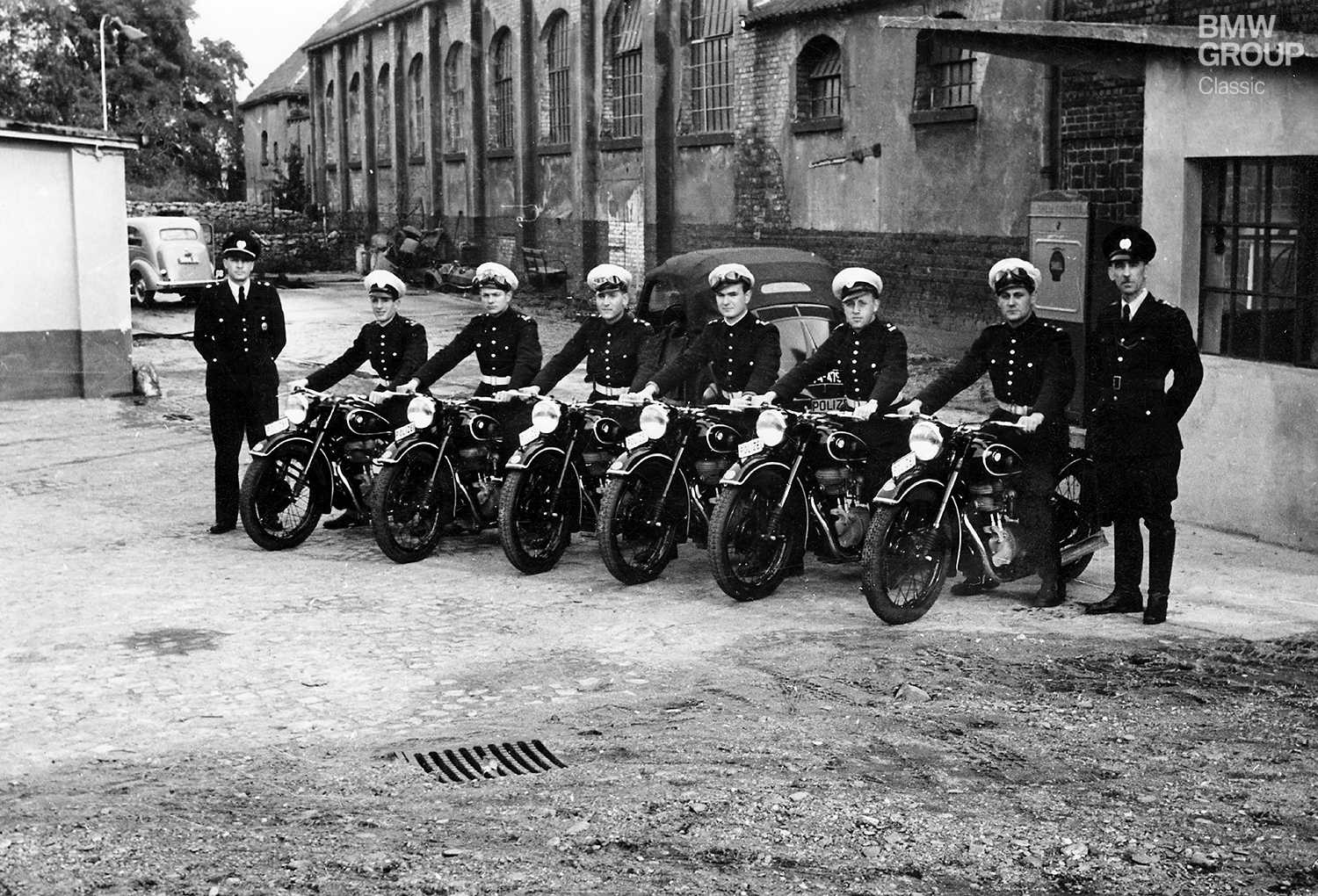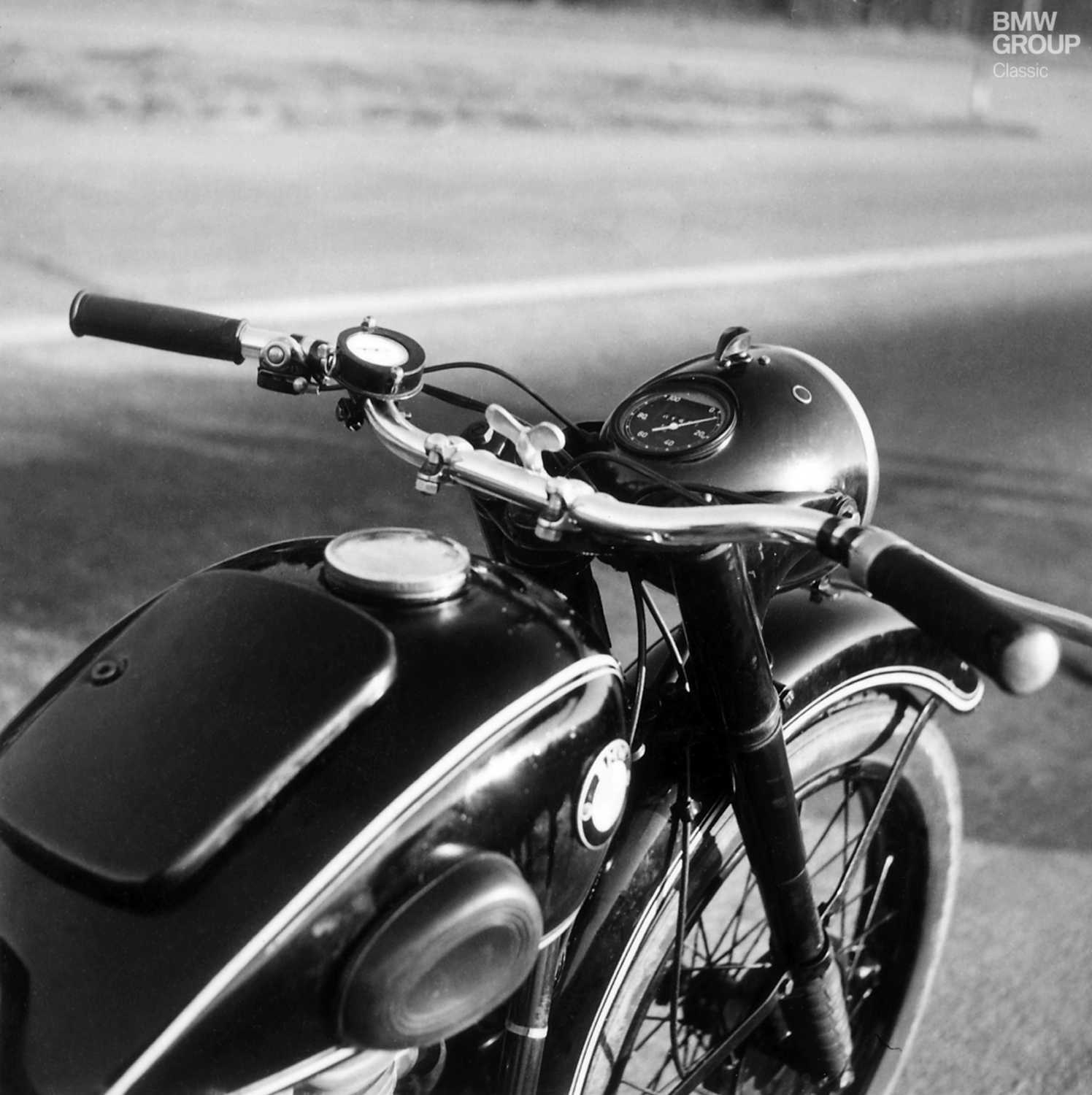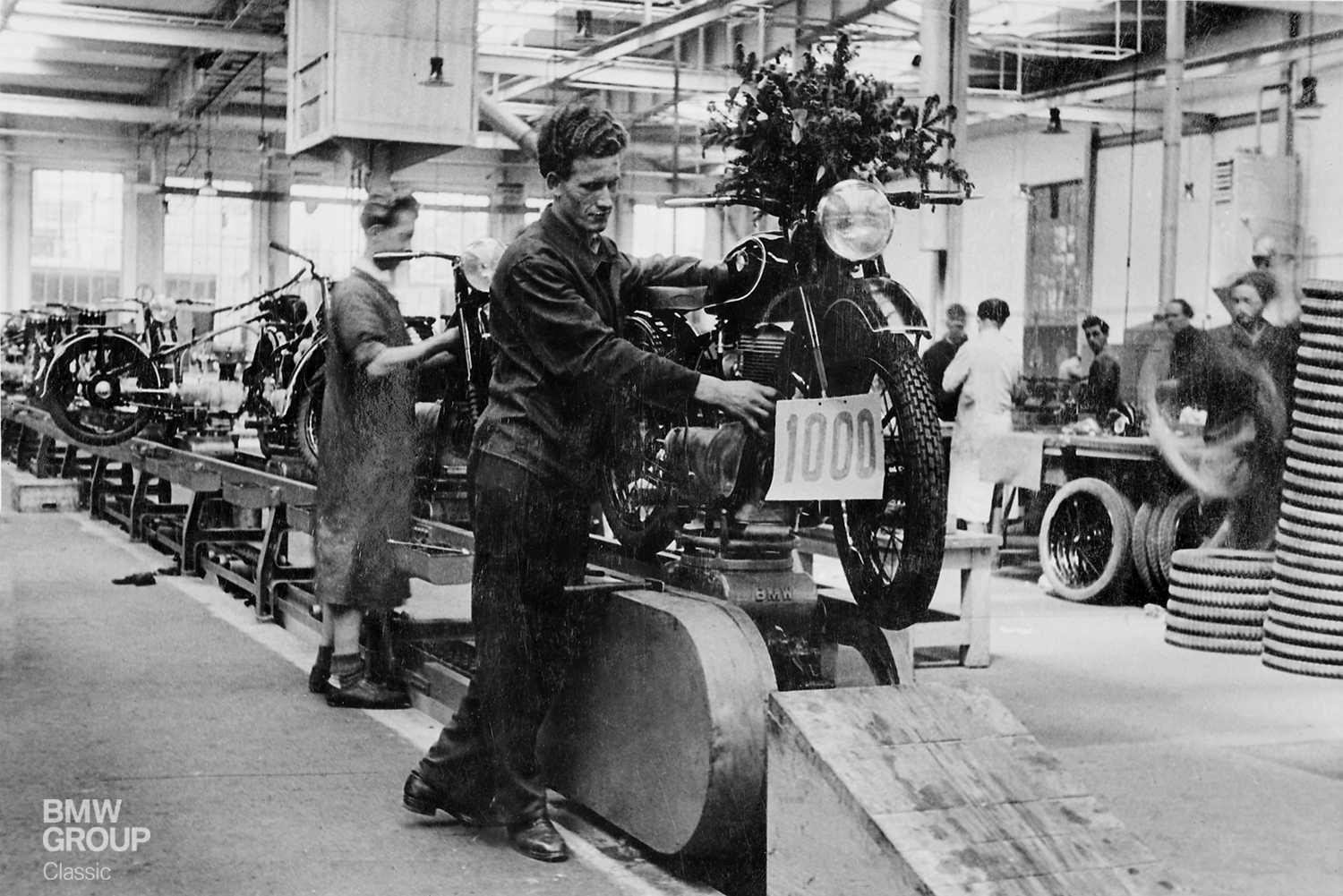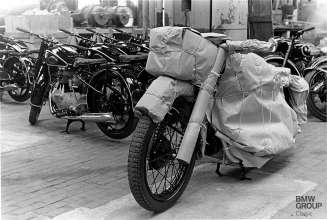BMW was hit hard in the years following the Second World War. Motorcycle manufacture had been relocated to the Eisenach plant for capacity reasons during the war, together with most of the spare parts and machine tools. Once hostilities ended, however, all these production resources were lost, design drawings included; the Iron Curtain had descended and, as far as the Bavarians were concerned, Eisenach might just as well have been on the moon.
The R 24 replaced the R 23 built up to 1941. In fact, a second-hand R 23 provided the template for new design sketches based on its measurements (the existing drawings were stored in Eisenach, now well out of reach in the Soviet zone). With just a single cylinder and a capacity of 250cc, the newcomer was intended to be a low-cost model – undoubtedly a wise decision in those tough post-war years, when everyone had big dreams but small budgets. The currency reform finally heralded the new deutschmark in the summer of 1948, putting a stop to the black market and rampant bartering. And so an entire population embarked on a new life, with a gift of 40 deutschmarks per head to send them on their way.
Necessity is the mother of…brand-new facilities.
To start manufacturing motorcycles in Munich again, new production facilities first had to be acquired. And then there were the reparations imposed by the Americans, which weighed on every decision taken by plant management. Initially, the occupying forces even prohibited the production of motorcycles with capacity greater than 250cc. So, although a new and highly attractive motorcycle was unveiled in 1948, it wasn’t until the following year that production began in earnest. It was soon progressing at a swift pace, though, reaching the 1,000 mark by the spring of 1949.
One for all.
BMW had enjoyed a great deal of success with single-cylinder models before World War II, and there was certainly a market for these small 250cc machines. Though not purveyors of great power, they were inexpensive and offered excellent everyday practicality. The R 24 generated 12 hp at 5,600 rpm, enough to give it a top speed knocking on the door of 100 km/h (62 mph). The four-speed gearbox was new; previously, three gears had to suffice. Wheel guidance at the front was handled by a modern telescopic fork, while the rear wheel was unsprung to keep costs down. The bike was, of course, painted in black and finished with trademark white pinstripes. It had a price tag of 1,750 deutschmarks – a considerable sum of money for the average employee (200 – 300 deutschmarks was a normal monthly wage at the time), but far less than the cost of a car. It is also worth remembering that, due to the ravages of the war, the second-hand market was virtually non-existent.
The R 24 was superseded by the R 25 in 1950. The principal distinguishing feature of the new model (besides a series of relatively minor modifications) was its rear suspension. 12,020 units of the R 24 were built, as it paved the way for Germany’s economic miracle. The resultant desire for greater mobility featured motorcycles front and centre. Today, the simple and robust style of the R 24 is reminiscent of an era that symbolised a new dawn – and a boldness of intent since unmatched.





